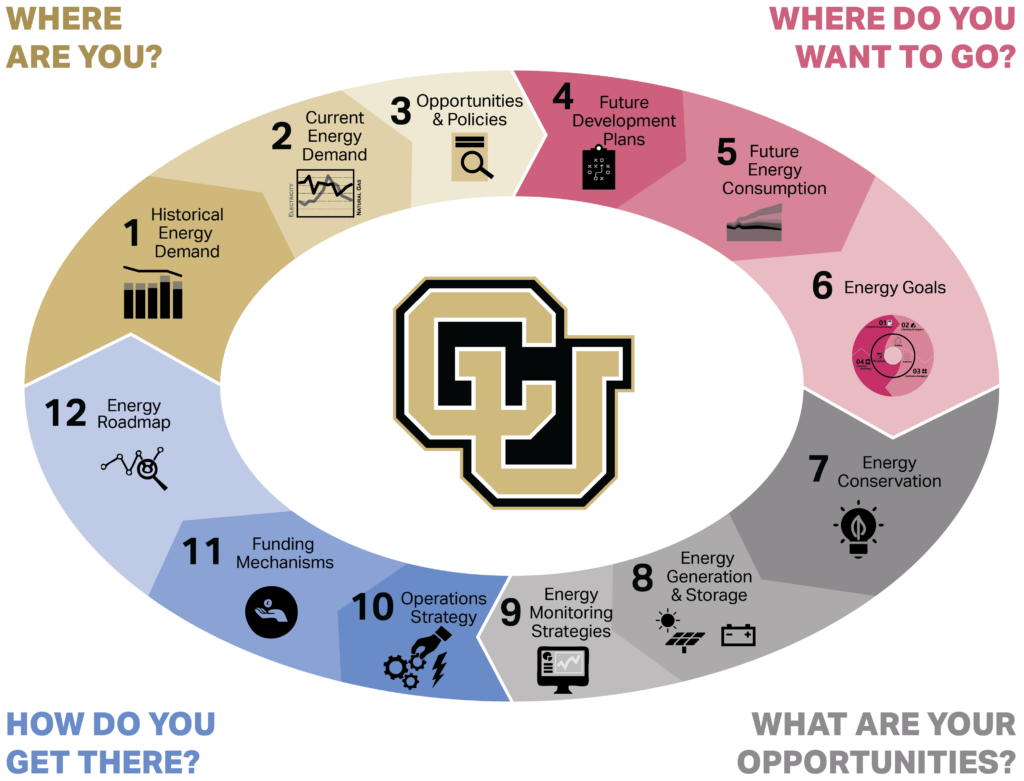The mission-driven campus: Achieving a net-zero future
This story is the second in a series on trends in designing for higher education, featuring strategies on consensus-building across university campuses and developing tools to create a path to a net-zero future. The first story in our series addressed flexibility and a future topic will speak to equity.
Promoting sustainability initiatives, reducing energy consumption and minimizing carbon footprints are vitally important objectives when designing for climate mitigation — even more so for college and university campuses that consume large amounts of natural resources and expel greenhouse gases (GHG).
The University of Colorado at Boulder (CU Boulder) has always kept sustainability efforts at the forefront of their campus mission. In April 2021, the chancellor issued a call to climate action, which committed the university to achieving carbon neutrality by no later than 2050. We then partnered with CU Boulder to spearhead the development of the first campus-wide planning effort devoted to energy use and efficiency. The resultant Energy Master Plan (EMP) details the campus’s energy vision and establishes an implementable roadmap to accomplish net-zero goals over the next 20 years.
The plan lays out the university’s strategic vision for energy infrastructure and operations to support emission reduction and resilience goals. The cumulative estimated energy cost savings from the implementation of this plan amount to more than US$50 million before 2035.
The strategies include implementing high-performance design codes and conservation measures along with continuous facility optimization, heating decarbonization, occupant engagement and renewable energy initiatives. Importantly, the EMP validates the campus’ GHG reduction goal of 50 percent by 2030 and a 30 percent decrease in energy use intensity of campus buildings by 2035.
A common challenge when planning for energy initiatives is access to reliable data. We addressed this issue at CU Boulder by modeling the expected energy loads based upon existing information collected from facility and occupancy data.Then we filled in gaps in the energy data set to get the most accurate baseline for analysis. The plan development utilized Rosetta, our web-based analytics platform, to facilitate a detailed modeling analysis in support of the goals and strategies in the EMP — a level of analysis that proved far more realistic and economical than using traditional energy modeling methods.
An EMP can be difficult to execute because it is typically a siloed, facilities-led effort. In the case of CU Boulder, we developed a strategy to solicit input from myriad stakeholders across the campus ecosystem. Our multifaceted outreach drew from areas as diverse as finance and athletics, and also sought broad input from the student body.
We fostered engagement by forming three distinct working groups. The Energy Master Plan Group was the centerpiece, built around a purpose of building consensus on the definition of energy resilience, setting goals and formulating an implementation road map along with two other working groups, the Energy Action Group and Campus Energy Teams. This collaborative, consensus-building approach resulted in a plan that is truly representative of a comprehensive strategy — recognizing the importance of each stakeholder’s role in the achievement of campus-wide goals.
The plan not only defines specific actions necessary to empower CU Boulder stakeholders, but it also maintains the legacy connections to ensure the measures laid out will remain at the forefront of future resiliency planning — which is critical in the rapidly changing environment of higher education. The adoption of the EMP ultimately reflects a commitment to good stewardship of the earth’s limited resources while providing economic, sustainable benefits to the CU Boulder campus.








